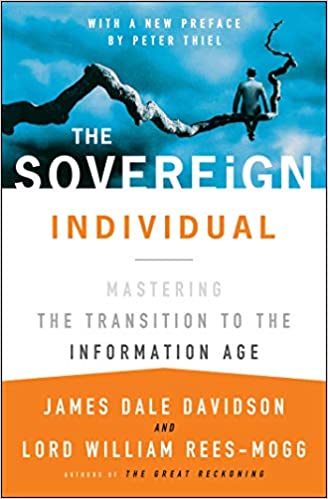Parents have a lot of jobs, each as important as the next. But learning how to teach kids about money is one of the most important jobs.
You don’t have to be a financial expert to help your kids learn the importance of handling money responsibly. Teaching kids the basic concepts about spending, saving, and reaching goals is the best financial education you can provide.
Why Teaching Kids About Money Is Important
Money management is a life skill, and it’s up to parents to teach kids how to manage money at a young age.
The more natural you make financial literacy for kids, the easier it is for them to grow up knowing how to have financial responsibility. While schools may teach kids the basic concepts about money, there is no better way to help kids learn than with a hands-on approach.
When Is the Best Age To Start Teaching Kids About Money?
The best age to teach kids about money is when they can count and understand basic concepts. You can start simple topics with most kids when they are toddlers or preschool age. The key is implementing as many strategies as possible but at an age-appropriate level.
12 Smart Strategies To Teach Kids About Money
Personal finance topics can feel overwhelming, even for adults, but here is how to teach kids about money.
1. Set a Good Example
Kids watch everything you do and hear everything you say. Make sure any conversations you have about money in front of them are positive and helpful.
Your goal is to set a good example, showing kids how to spend money wisely and what to consider when making important financial decisions.
You don’t have to include your kids in every money discussion, but know they are always watching and listening, no matter their age.
For example, when you go to the store, talk about your decisions, even if it’s as simple as choosing the cheaper box of cereal or sacrificing one thing you want for another. Let them see and hear the decisions you make daily.
2. Show Them How Money Works
You can teach kids how money works as soon as they can count! Use play money and have them count the coins or dollar bills. As they get a little older, play store and teach kids how to pay for items.
As you teach these lessons, help them understand they must ‘give up’ money to get the item they want. Explain to kids that everything has a cost: the money they must give up.
The earlier kids understand they must decide how they want to spend money and that it’s not an infinite resource, the easier it will be for them to understand financial security and how to make tough financial decisions.
3. Discuss Needs Versus Wants
Kids, especially younger kids, think they ‘need’ everything. Your job as an adult is to introduce children to the concept of needs versus wants. Needs are necessary for survival, and wants are things they could live without but are nice to have.
When your child asks for something, you should discuss whether it’s a need or want.
If it’s a want, help your child learn how to earn it, versus you handing over whatever they want. Let them see how you can purchase wants when you have extra money, but until then, wants aren’t necessary.
4. Teach the Value of Delayed Gratification
Along the lines of needs and wants is the concept of delayed gratification. As parents, you must teach children how to delay their gratification to achieve financial success.
For example, when you’re at the store and your child sees a toy or clothing item he ‘must have,’ don’t give in immediately. Instead, tell him you’ll think about it and return to it another day. At a young age, this teaches kids they can’t have everything they want immediately.
As your child ages, you can teach him how to wait and see if he still wants the item. Chances are, he’ll forget about it and move on after a day or two. If not, you can teach kids how to save for the item they want, buying it when they have the money available.
5. Encourage Goal-Setting With Their Piggy Bank
You can teach kids about money at any age, even as young as toddlers with piggy banks.
When kids get money, help them learn how to save it by putting it in their piggy bank. Younger kids may do better with a clear jar that allows them to see the coins and how they stack up each time they add more.
As kids age, you can teach them how to set goals and reach them with their piggy bank money. For example, if there’s a toy your 1st grader wants, help him earn money by doing chores around the house so he can see how to work for what he wants.
6. Establish a Reward System
You can establish a reward system with kids at an early age. Decide if you want to give your child an allowance or if you want him to learn to earn money in other ways.
For example, you can have a set weekly allowance you pay for doing age-appropriate chores or let your child ask you what he can do to earn money when he has a financial goal.
The key is to have a reward system your child understands and can learn how to work for what he wants.
7. Discuss Ways To Earn Money
You can teach kids ways to make money in elementary school if you’re willing to give them an allowance for doing chores at home. You can suggest jobs like pet sitting, mowing lawns, shoveling snow, or babysitting as they enter middle school.
Then, as they become the legal age to work in your state, encourage them to get a part-time or summer job.
Working not only helps them earn money, but it also teaches them other levels of responsibility. As kids learn to juggle work and school in their daily lives, they’ll learn to prioritize their time and responsibilities, which is how they begin learning to be responsible adults.
8. Let Them Have Their Own Checking or Savings Account
When your child has his own money, it’s also a good idea to let him have his own bank account. You can open a savings account for kids when they are first born or before they understand anything about money.
A checking account should be reserved for when they earn their own money, and you’re ready to help them develop good money habits.
Earning money is a responsibility, as is learning how to manage it. Many banks have apps that allow parental controls on how and where kids spend money. This allows kids to explore how to handle money themselves, but with some oversight.
9. Teach Opportunity Cost
Opportunity cost is just as important to learn as delayed gratification. When kids want something, they should learn the opportunity cost of what they must give up to buy it.
Not only are they spending money, but they are using that finite resource on one item and won’t be able to buy another.
This helps kids become good decision-makers. When faced with a choice, they’ll be better prepared to avoid impulse buys and be able to make trade-offs that make sense instead of putting themselves into debt.
10. Teach Kids How to Budget
It’s time to talk about budgets when kids hit their teen years. You don’t have to make it complicated, but the more used to budgeting they are, the easier it will be for them as an adult.
If your teen has a part-time job, help him split his funds between needs, wants, and saving money. This reinforces the 50/30/20 budget that many adults use and helps kids understand good money management skills.
11. Use Real-Life Scenarios
Don’t be afraid to share real-life stories with your children! Even better, include them in your money decisions or money management so they can see how to make real-life decisions, especially in the teen years.
For example, if you’re buying a new appliance, let your children see how you decide on the one you purchase. Also, show them how you pay for it.
If you finance the purchase, teach kids how that works. If you’ll pay the balance in full when it comes, let them watch you write the check or pay the balance online.
Talk about how credit card offers may seem enticing but can cost you more in the long run. You can even share your own credit card stories if you have a history of credit card debt.
12. Encourage Giving
No matter your child’s age, always encourage giving. Teach them to think about others and reserve even a small portion of their money to give to others. Young kids can save coins or host a lemonade stand to raise money for a cause that speaks to them.
FAQs
When Should I Start Teaching My Child About Money?
The earlier you talk money with your child, the more natural money decisions will be for him.
Keep your lessons age-appropriate, but always make money seem like a natural part of life and that the decisions aren’t stressful. This will help kids grow up with a positive money mindset and to use money responsibly.
How Can I Make Money Lessons Fun and Engaging for My Kids?
Money can be fun! Make games out of your lessons, or incorporate ways to teach kids about money in their everyday tasks. When you take them grocery shopping with you, they’ll learn about money.
The same is true when you give money at church, talk about bills in front of them or role-play. This way, it doesn’t feel like a lecture and, instead, a way to connect with you.
Are There Specific Games or Apps That Can Help With Financial Literacy?
A great way to give kids a hands-on way to learn about money is to play the Game of Life or Monopoly. These games include ‘real money’ they can use to learn opportunity cost, how to make decisions, and, of course, the importance of saving money.
Should I Introduce My Kids to the Concepts of Credit and Debt?
Yes, the more natural you make credit and debt, the more educated decisions young adults will make.
If kids constantly see you swiping plastic to pay for things, they won’t understand the true impact of spending money. Especially in their teen years, talk about credit cards, how they work, and when you should and shouldn’t use them.
What if I Don’t Feel Confident in My Own Financial Knowledge To Teach My Kids?
If you worry about your own personal finance decisions, consider enlisting the help of another trusted adult, like a grandparent or aunt/uncle, to teach your kids about money.
The Bottom Line
Instilling financial literacy in children is a crucial aspect of parenting. You may wonder how to teach kids about money that will leave them with a solid understanding and open up their minds for the future.
By using our twelve strategies above, setting a positive example, and introducing concepts gradually, you can empower your kids to make informed and responsible financial decisions.












